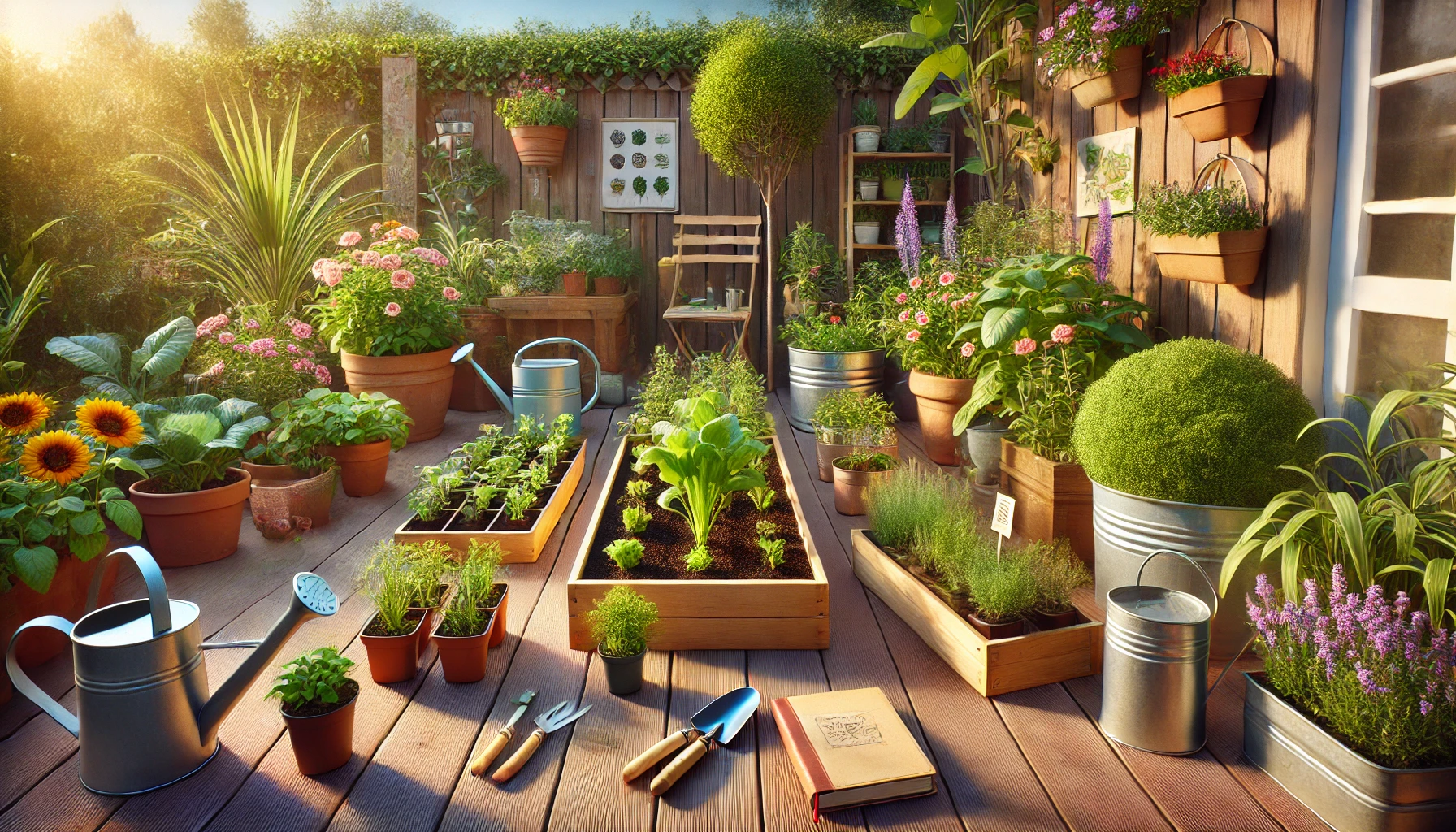Gardening might seem like a complex activity at first, especially if you’ve never held a shovel or worried about watering schedules before. But the truth is, anyone can start a garden—even without prior experience. Whether you live in a house with a backyard or a small apartment with just a balcony, there’s always a way to add a little green to your life.
Let’s walk through a simple, beginner-friendly approach to starting your first garden, step by step.
Start with a Clear Goal
Before buying any tools or seeds, think about what you want from your garden. Do you want to grow vegetables? Do you want a space full of flowers for aesthetics? Or maybe just a few herbs for cooking? Knowing your purpose will help guide your decisions along the way.
Common goals for beginner gardeners:
- Grow organic vegetables at home
- Create a space for relaxation and beauty
- Start a hobby for stress relief
- Engage kids or family in a creative outdoor activity
Assess Your Space and Sunlight
Plants need sunlight—and different plants need different amounts. Start by observing the space where you want your garden to be:
- How many hours of sunlight does it get per day?
- 6+ hours = Full Sun
- 3–6 hours = Partial Shade
- Less than 3 hours = Shade
This will help determine what kinds of plants will thrive in your space.
Even if you don’t have a yard, container gardening on a windowsill or balcony can be very rewarding.
Choose Easy-to-Grow Plants
As a beginner, it’s best to start with plants that are known to be low-maintenance. You can always experiment with more challenging varieties once you gain confidence.
Great beginner-friendly plants:
- Herbs: Basil, parsley, mint, chives
- Vegetables: Lettuce, radishes, cherry tomatoes, green onions
- Flowers: Marigolds, sunflowers, zinnias, pansies
- Indoor plants: Snake plant, pothos, spider plant, peace lily
These plants are resilient and forgiving—perfect for those still learning.
Gather the Basic Tools
You don’t need an expensive gardening set to get started. Just a few simple tools will be enough:
- A hand trowel (for digging and planting)
- Pruning shears (for trimming plants)
- A watering can or spray bottle
- Gardening gloves (optional, but helpful)
- A small shovel or fork (for soil preparation)
If you’re gardening indoors or on a balcony, you can even manage with just a trowel and some pots.
Prepare the Soil
Healthy soil = healthy plants.
If you’re planting in the ground, loosen the soil with a shovel and mix in some compost or organic matter to improve fertility.
For containers, use potting soil, not regular dirt from outside. Potting mix is designed to drain well and give roots the right structure and nutrients.
You can also make your own compost with kitchen scraps like vegetable peels, eggshells, and coffee grounds.
Learn the Art of Watering
Overwatering is one of the most common mistakes beginners make. Here’s what you need to remember:
- Stick your finger in the soil—if it’s dry about an inch below the surface, it’s time to water.
- Water slowly so it can soak deep into the soil.
- Try watering early in the morning or late afternoon to reduce evaporation.
Different plants have different water needs, so make sure to read the care labels or do a quick search on each one.
Label and Track Your Plants
It’s easy to forget what you’ve planted and where. Use small labels to write the name and planting date of each plant. You can also keep a gardening journal where you record:
- When you watered
- What you planted and when
- Sunlight exposure
- Any pest issues you noticed
This will help you learn from experience and track what works best for your garden.
Understand the Seasons
Not all plants grow well year-round. Learn which plants are seasonal in your region, and plan accordingly.
- Spring: Great time for planting most vegetables and flowers
- Summer: Focus on maintenance, harvesting, and heat-tolerant plants
- Fall: Time to plant cool-weather crops or bulbs
- Winter: Plan your garden, start composting, and prep indoor plants
A little planning based on the season can save you a lot of disappointment.
Don’t Be Afraid of Mistakes
Every gardener makes mistakes. Plants may die, seeds may not sprout, and that’s perfectly okay.
Use every setback as a learning opportunity. Over time, you’ll start noticing patterns, reading signs from your plants, and becoming more intuitive with their needs.
Connect with Other Gardeners
Join online communities, forums, or local gardening clubs. They’re a goldmine of tips and encouragement. You can ask questions, share photos, or even exchange seeds and cuttings with others.
Some great online platforms:
- Reddit (r/gardening)
- Facebook gardening groups
- Instagram for visual inspiration
- YouTube channels with step-by-step gardening guides
Create a Routine You Enjoy
Make gardening part of your lifestyle. It’s not just about the results—it’s about the joy of nurturing something and watching it grow.
Even watering your plants in the morning with a cup of coffee in hand can become a grounding, peaceful ritual.
Final Thoughts: Growing More Than Just Plants
Gardening teaches patience, mindfulness, and responsibility. The best part is: you’re never really done learning. Even expert gardeners discover new things all the time.
So grab that trowel, get your hands dirty, and start growing. Your first garden might not be perfect, but it will definitely be rewarding.
